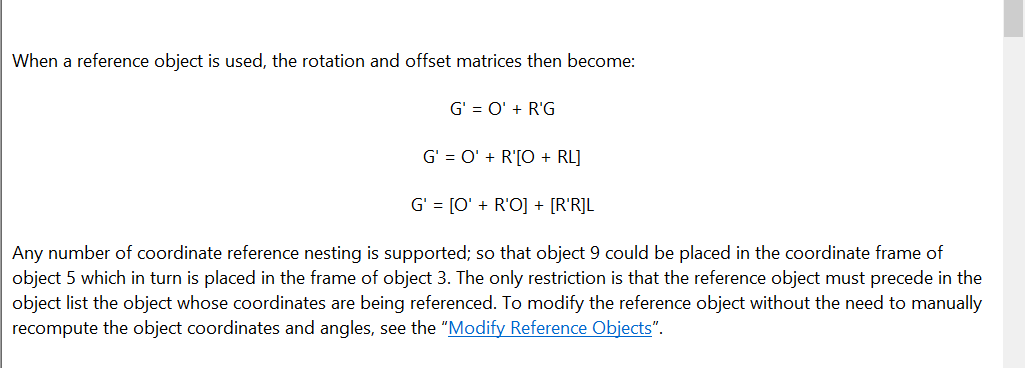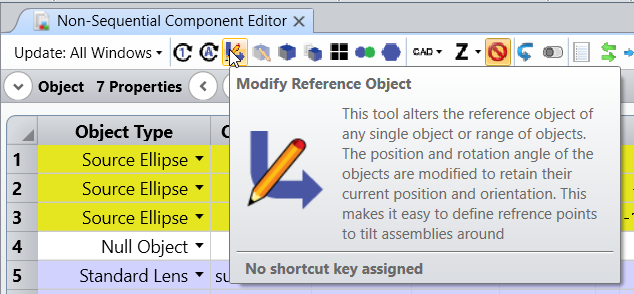What is the purpose of the Ref Object column? What does it do?
What is the purpose of the Ref Object column in Non-Sequential Mode?
Best answer by Allie
The Ref Object column in Non-Sequential Mode allows us to more easily group objects together based on their function. When object X is set as a reference object for object Y, then the X, Y, Z location and angle data will be with respect to the current location of object X. If multiple lenses will be in a single barrel when manufactured, for example, then the Ref Object parameter can be used to make sure they are always positioned together.
There are three settings for Ref Object that may be used:
- Ref Object = 0: The object in question is positioned with respect to the global coordinates.
- Ref Object = Positive Integer: The object is positioned with respect to another object within the Non-Sequential Component Editor.
- Ref Object = Negative Integer: In this example, let's say that Ref Object = -1. In this case, we are declaring that the placement of object N should be with respect to the placement of object N-1.
In the NSCE below, we see that objects 5-7 are placed with respect to some other object in the system:

Looking at the above data, we can see that object 6 is the reference object for object 7. Currently, object 6 is located at (0, 0, 9.27). Object 7 is located at (0, 0, 5.75). However, that is not the global location for object 7. In global coordinates, object 7 is actually located at (0, 0, 15.02). Of course, the global Z position of object 7 (15.02) is given by adding its Z position to that of its reference object (5.75 + 9.27).
Reference objects will be used to apply position and tilt data. This is discussed in the Help System file ' The Setup Tab > Editors Group (Setup Tab) > Non-sequential Component Editor > Non-sequential Overview > Object Placement ':

To easily group object positions together (or to revert everything to global coordinates) you can use the Modify Reference Objects tool in the NSCE toolbar:

This allows one to quickly change reference objects without altering the location of anything in the system. There is more information about this tool in our Knowledgebase: 'How to use the Modify Reference Object tool.'
Enter your E-mail address. We'll send you an e-mail with instructions to reset your password.



